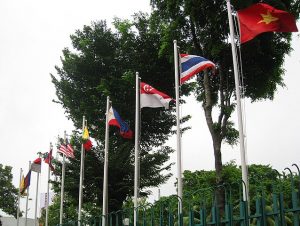The recent release of two Reuters journalists from prison in Myanmar, along with similar incidents we have seen in other Southeast Asian countries recently, are unquestionably welcome developments considering the difficulties undergone by these individuals. But such developments are also unfortunately symptomatic of a region that is plagued by efforts to crack down on a free media, and a climate that seems to be getting worse before it gets any better.
Reporters Wa Lone and Kyaw Soe Oo, who were part of one of the most influential news organizations in the world, should never have been locked up in the first place, following a verdict that cost them and their families dearly. Reuters was thankfully able to drum up support from diplomatic quarters, media watchdogs, and human rights groups, and the campaign to win freedom for the pair was formidable.
But while it is a relief that these journalists have been freed, one should not exaggerate what this means for freedom in Myanmar and Southeast Asia more generally.
For instance, it was puzzling when United Nations Secretary-General Antonio Guterres said that the release was a sign of the Myanmar government’s commitment to the transition to democracy. In reality, Aung San Suu Kyi’s government is hardly worthy of applause, and scrutiny should continue to be placed on it for detaining these journalists in the first place.
Similarly, British Foreign Secretary Jeremy Hunt’s optimistic note that this was a “glimmer of hope” because world media freedom is on the decline was misplaced. In Southeast Asia, the freeing of individual journalists – whether it is the Reuters journalists who spent 511 days behind bars in Myanmar, or Uon Chhin and Yeang Sothearin, from Radio Free Asia, and James Ricketson, an Australian documentary maker, released in Cambodia – should not detract from the fact that the overall climate for media freedom is deteriorating.
As The Atlantic rightly noted, their release was “a false dawn for journalists in Southeast Asia.”
To be clear, life for journalists in Southeast Asia has not improved. Seen broadly, not one country rates in the top 120 places on the World Press Freedom Index. If anything, the environment looks to be bleaker than ever, rather than improving anytime soon As Teddy Baguilat, a Philippine politician, noted, the media is under increasing threat across Southeast Asia.
“It is abhorrent that brave journalists should have to put their personal freedom or even lives on the line when they are simply trying to do their jobs,” he said. In the Philippines, media are experiencing unprecedented levels of violence, intimidation, and government intervention.
In the Philippines, among the more democratic Southeast Asian states, the treatment of journalists by President Rodrigo Duterte has undermined what should be a thriving democracy, with the country continuing to remain among the most dangerous places for journalists to operate in the world.
Justice has not been served for the notorious 2009 “Maguindanao massacre” of 58 people, including 34 journalists, by 100 armed men, despite overwhelming evidence that points to all manner of shenanigans. More recently, Duterte singled out journalists, lawyers, and opposition candidates ahead of recent midterm elections for “threatening national security.”
In Vietnam, the focus is primarily on bloggers who emerged with the digital age. At least 16 journalists and bloggers have been jailed there since 2016.
Nor is the situation improving in Thailand where an election, described as “ineptly rigged” by The Economist, has failed to rein in the heavy hand of the junta that seized power more than five years ago. The country’s democratic woes are set to continue, with a deleterious impact on freedoms.
The situation for media freedom does not get better if one looks at the tiny, oil-rich sultanate of Brunei, the one-party communist government in Laos, or the city-state of Singapore where the People’s Action Party (PAP) continues its stranglehold on power as it has since independence.
To be sure, one ought not to dismiss progress where it exists. The release of journalists in Myanmar and Cambodia is a positive data point in two countries where worries about suppressed freedoms and tilts toward China have dominated the headlines. And Malaysia appears to have swung in a more civilized direction, with recent elections boding-well for democratic freedoms and reform.
Nonetheless, there is much more to be worried about in Southeast Asia’s media environment than to be positive about. While we should always applaud the release of individuals that have been wrongfully detained for their craft, we should not confuse these individual developments for the regionwide negative trends we see.
Luke Hunt can be followed on Twitter @lukeanthonyhunt

































